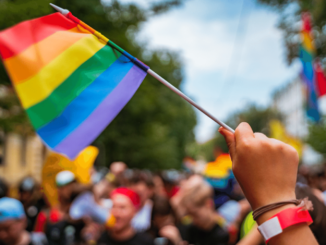
The International Women’s Day 2024 campaign theme is ‘Inspire Inclusion.’ To inspire inclusion means to celebrate diversity and empowerment on International Women’s Day 2024 and beyond. International Women’s Day (IWD) is a global celebration of the social, economic, cultural, and political achievements of women. Each year, this day serves as a powerful reminder of the progress made towards gender equality and highlights the work that still needs to be done.
While matrilineal societies have existed around the globe for centuries, European society was based on the patrilineal Ancient Greeks where only adult male citizens who owned land were permitted to vote. For centuries women were unable to vote, own land, or inherit.
Mary Wollstonecraft published “A Vindication Of the Rights of Women” in 1792. It is one of the earliest treatises in the English language that advocated for gender equality. Well received at the time of publication, Wollstonecraft issued an early call for women’s suffrage: “I really think that women ought to have representatives, instead of being arbitrarily governed without having any direct share allowed them in the deliberations of government.”
The idea of women having access to education and the right to vote took hold. By 1848, Americans Elizabeth Cady Stanton and Lucretia Mott gathered a few hundred people at their nation’s first women’s rights convention in New York. Together they demanded civil, social, political and religious rights for women in a Declaration of Sentiments and Resolutions.
On March 8, 1908, 15000 women workers in the needle trades marched through New York City’s Lower East Side to protest child labor, sweatshop working conditions, and demand women’s suffrage. Beginning in 1911, International Women’s Day was annually observed and in 1913, March 8 was chosen as the day to observe and celebrate women’s achievements.
The suffrage movement spread, and countries and colonies began to grant women the right to vote. WWI provided further impetuous to the women’s suffrage movement. Women’s contribution to the war effort challenged the notion of women’s physical and mental inferiority and made it more difficult to maintain that women were, both by constitution and temperament, unfit to vote. In Canada, women were allowed to vote in 1917.
By the time WWII broke out women were expected to support the war effort in multiple ways including becoming military personnel. The first two women’s services were created as auxiliaries to the air force and the army in 1941. Some 50,000 Canadian women eventually enlisted in the air force, army and navy. Many women were trained at Camp Barriefield (CFB Kingston) for roles in the Communication and Electronics Branch including coders and code breakers, visual signallers, teletype operators, switchboard and radio operators, plotters and telegraphists. They worked in British Columbia, Nova Scotia and Ontario, including at Camp X and were deployed overseas.
Today, women in the Communications and Electronics Branch hold every rank in the Canadian Armed Forces from Private to General. https://www.internationalwomensday.com/Activity/15586/The-history-of-IWD



